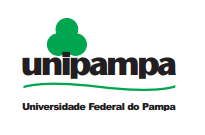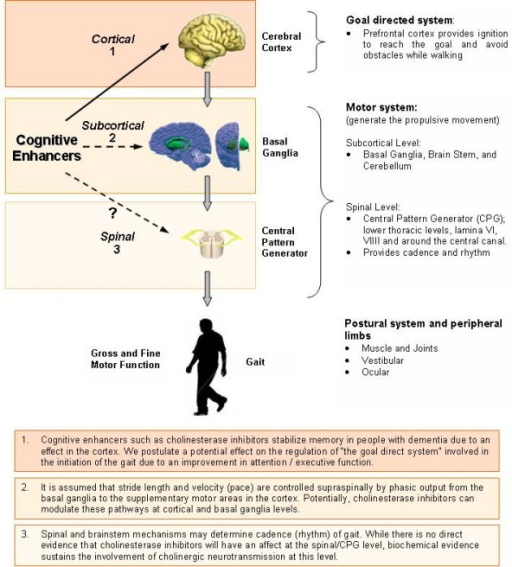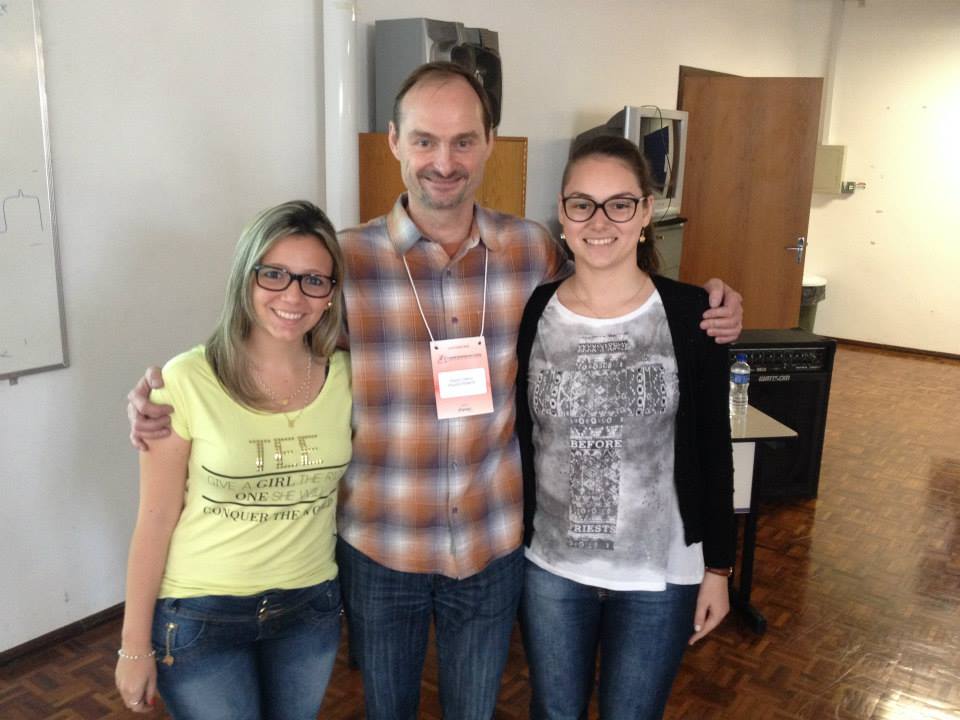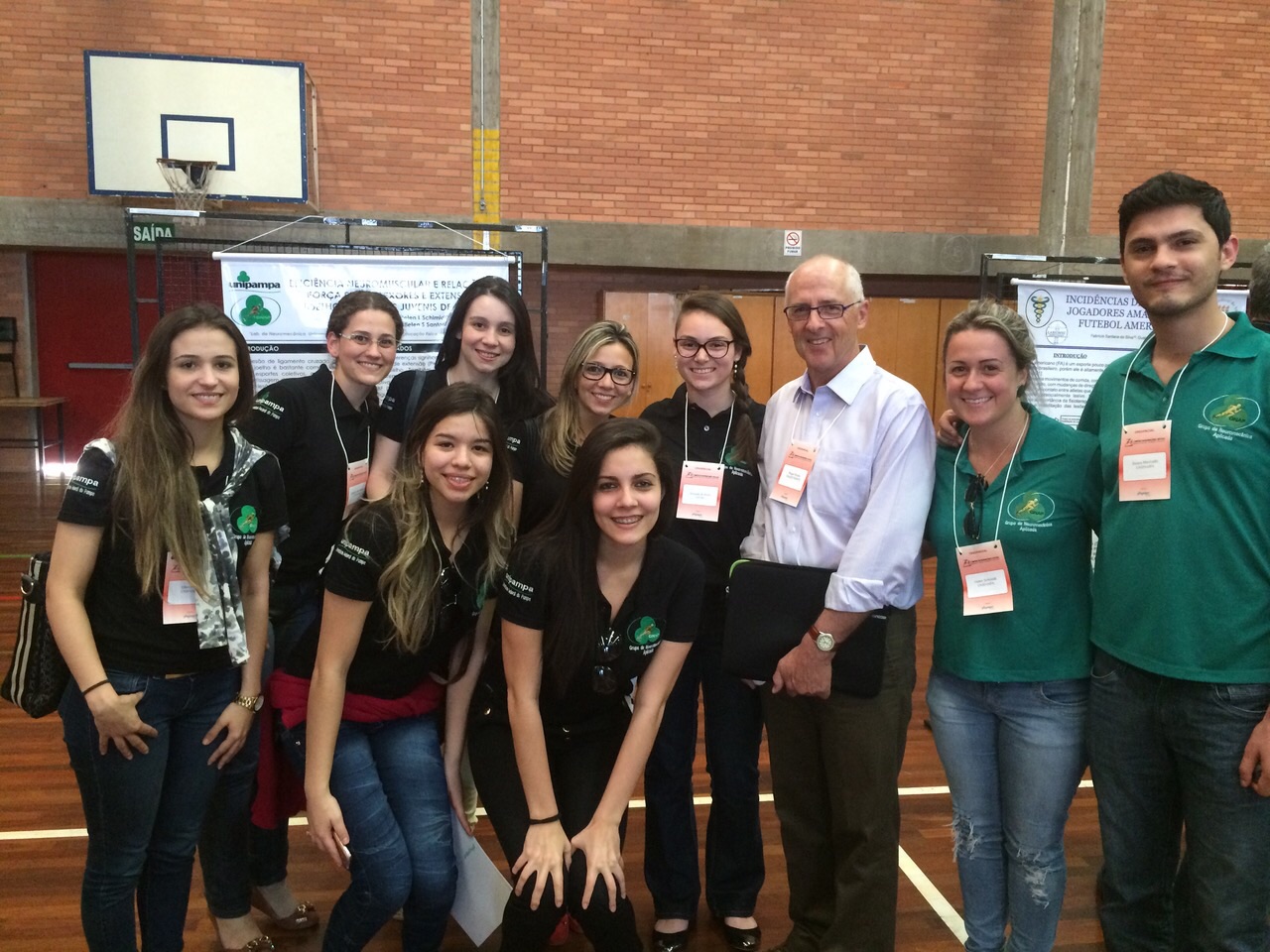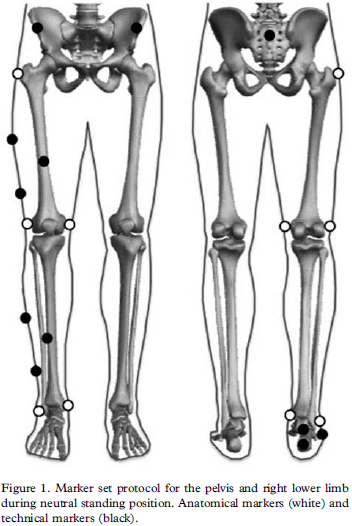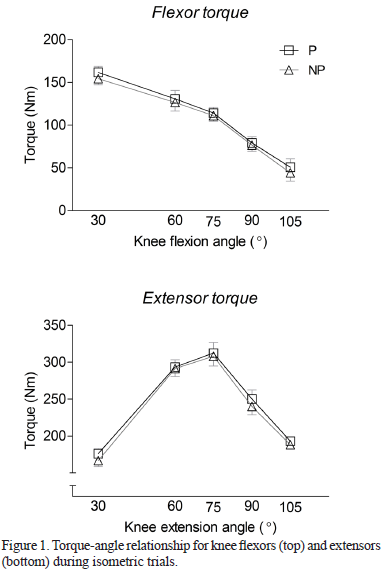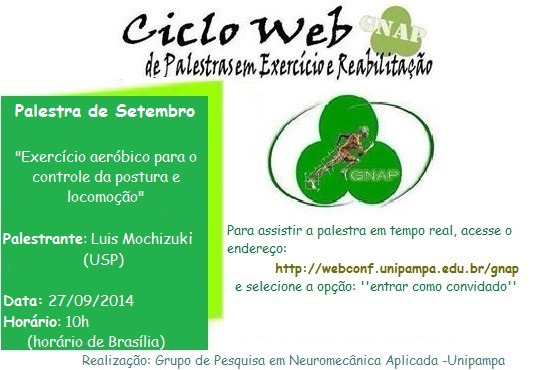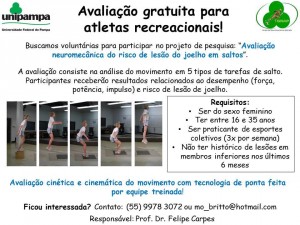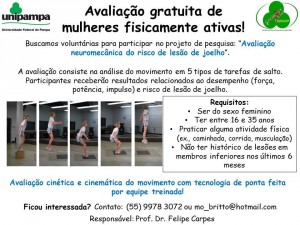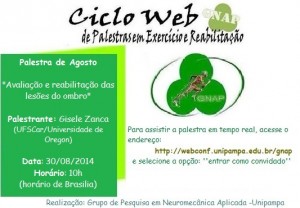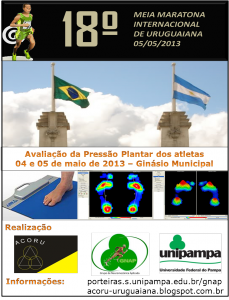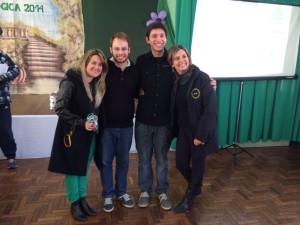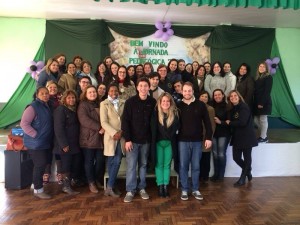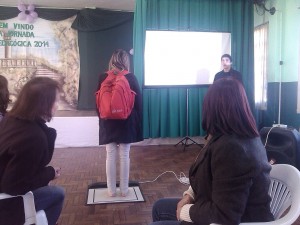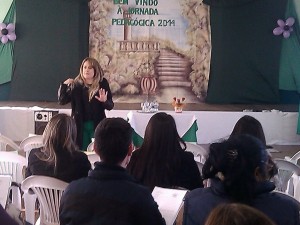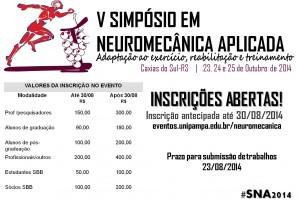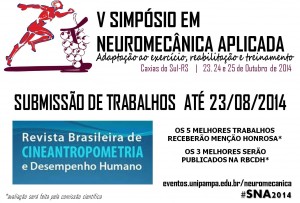.
.
.
.
.
.
.
.
Special Workshop on Neural Control of Gait
Professor Jacques Duysens is a widely recognized researcher in the field of neural control of gait. During his first visit to Uruguaiana, we are promoting a special workshop on “Neural Control of Gait”. This workshop will happen in the Campus Uruguaiana on November 11, 12 and 13rd, from 16:30h to 17:30h.
There is no fee registration and all academic community is invited.
If you are willing to join this workshop please fill the form in the link below. Please do not fill this form if you will not be able to attend the three days of the workshop.
For any question, send an e-mail to prof Felipe Carpes at carpes@unipampa.edu.br
* this workshop is supported by CNPq
** the specific place where the workshop will happen will be informed soon
*** registration will be open until November 10th, 12:00h
